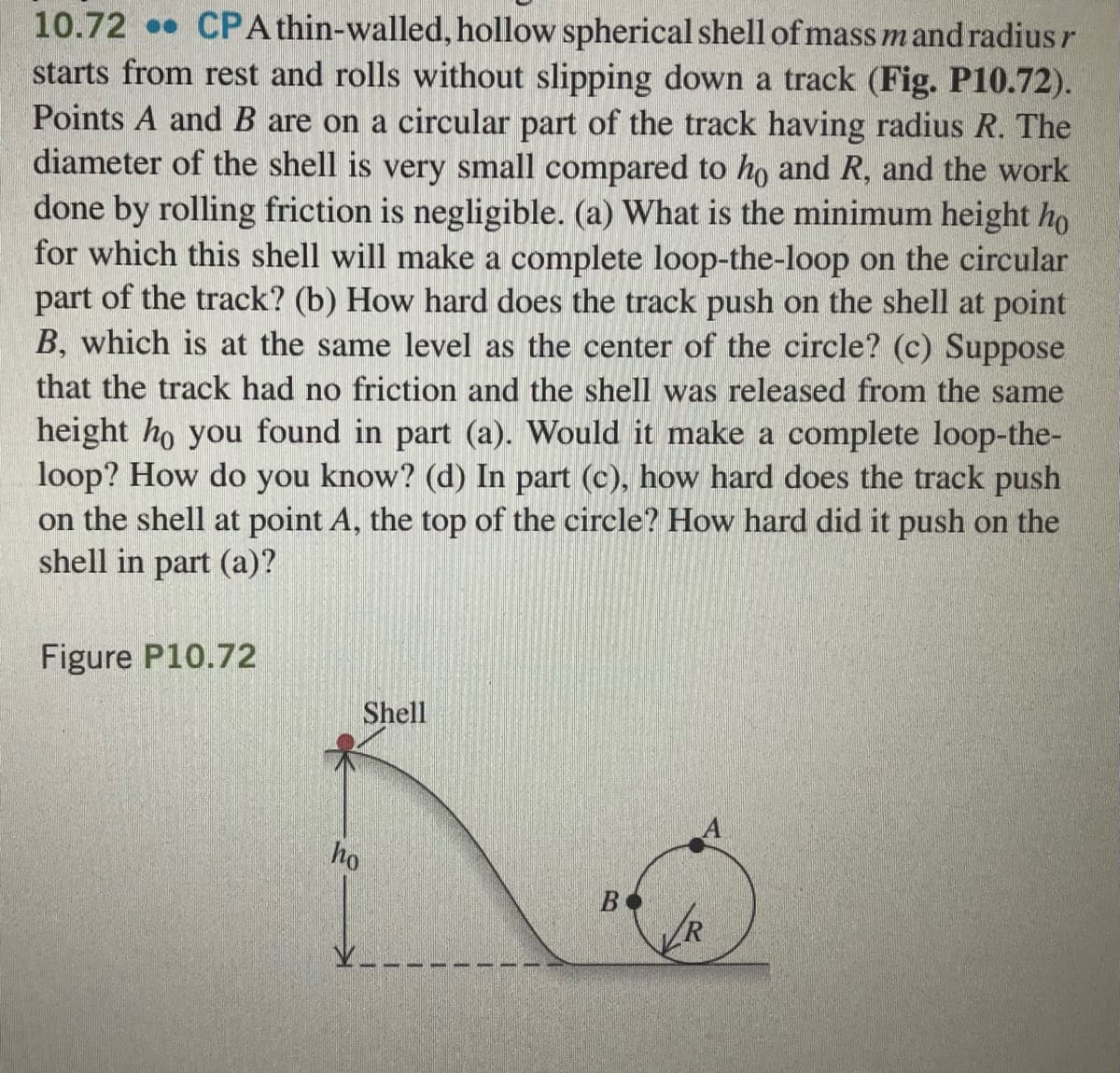10.72 CPA thin-walled, hollow spherical shell of mass m and radius r starts from rest and rolls without slipping down a track (Fig. P10.72). Points A and B are on a circular part of the track having radius R. The diameter of the shell is very small compared to ho and R, and the work done by rolling friction is negligible. (a) What is the minimum height ho for which this shell will make a complete loop-the-loop on the circular part of the track? (b) How hard does the track push on the shell at point B, which is at the same level as the center of the circle? (c) Suppose that the track had no friction and the shell was released from the same height ho you found in part (a). Would it make a complete loop-the-
10.72 CPA thin-walled, hollow spherical shell of mass m and radius r starts from rest and rolls without slipping down a track (Fig. P10.72). Points A and B are on a circular part of the track having radius R. The diameter of the shell is very small compared to ho and R, and the work done by rolling friction is negligible. (a) What is the minimum height ho for which this shell will make a complete loop-the-loop on the circular part of the track? (b) How hard does the track push on the shell at point B, which is at the same level as the center of the circle? (c) Suppose that the track had no friction and the shell was released from the same height ho you found in part (a). Would it make a complete loop-the-
Related questions
Question

Transcribed Image Text:10.72 CPA thin-walled, hollow spherical shell of mass m and radius r
starts from rest and rolls without slipping down a track (Fig. P10.72).
Points A and B are on a circular part of the track having radius R. The
diameter of the shell is very small compared to ho and R, and the work
done by rolling friction is negligible. (a) What is the minimum height ho
for which this shell will make a complete loop-the-loop on the circular
part of the track? (b) How hard does the track push on the shell at point
B, which is at the same level as the center of the circle? (c) Suppose
that the track had no friction and the shell was released from the same
height ho you found in part (a). Would it make a complete loop-the-
loop? How do you know? (d) In part (c), how hard does the track push
on the shell at point A, the top of the circle? How hard did it push on the
shell in part (a)?
Figure P10.72
Shell
ho
Expert Solution
This question has been solved!
Explore an expertly crafted, step-by-step solution for a thorough understanding of key concepts.
This is a popular solution!
Trending now
This is a popular solution!
Step by step
Solved in 2 steps with 4 images
